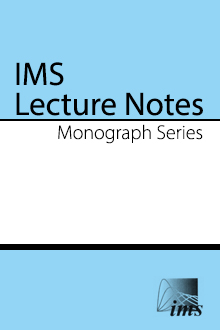Abstract
Network tomography has been regarded as one of the most promising methodologies for performance evaluation and diagnosis of the massive and decentralized Internet. This paper proposes a new estimation approach for solving a class of inverse problems in network tomography, based on marginal distributions of a sequence of one-dimensional linear projections of the observed data. We give a general identifiability result for the proposed method and study the design issue of these one dimensional projections in terms of statistical efficiency. We show that for a simple Gaussian tomography model, there is an optimal set of one-dimensional projections such that the estimator obtained from these projections is asymptotically as efficient as the maximum likelihood estimator based on the joint distribution of the observed data. For practical applications, we carry out simulation studies of the proposed method for two instances of network tomography. The first is for traffic demand tomography using a Gaussian Origin-Destination traffic model with a power relation between its mean and variance, and the second is for network delay tomography where the link delays are to be estimated from the end-to-end path delays. We compare estimators obtained from our method and that obtained from using the joint distribution and other lower dimensional projections, and show that in both cases, the proposed method yields satisfactory results.
Information
Digital Object Identifier: 10.1214/074921707000000238


